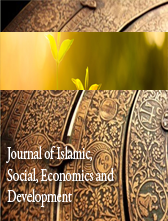GEOSPATIAL ANALYSIS OF COVID-19 VACCINE RECIPIENTS DISTRIBUTION IN MALAYSIA
Abstract
The COVID-19 pandemic has had a significant impact on the world, causing changes in social, economic, and demographic aspects of populations. To mitigate the spread of the virus in Malaysia, the government has launched the National COVID-19 Immunization Program with the aim of vaccinating 80% of Malaysians to achieve herd immunity. To evaluate the progress of the vaccination campaign, this study used Geographic Information System (GIS) technology to develop a database and map the spatial distribution of vaccine recipients by age group for each state in Malaysia. The findings showed that 85.7% (M=83.06 SD=9.93) of individuals received the first vaccine dose, 83.1% (M=80.4 SD=9.78) received the second dose, and 49.4% (M=49.4 SD=15.51) received a booster dose. Overall, Kelantan had the lowest percentage of vaccine recipients for all doses, with 64.8% for the first dose, 62.8% for the second dose, and 17.3% for the booster dose. Developing a geospatial database and mapping the distribution of vaccine recipients is an essential tool for the Malaysian Ministry of Health to monitor and evaluate the progress of the vaccination campaign, identify areas that need attention, and prioritize resources for future vaccine distribution.













